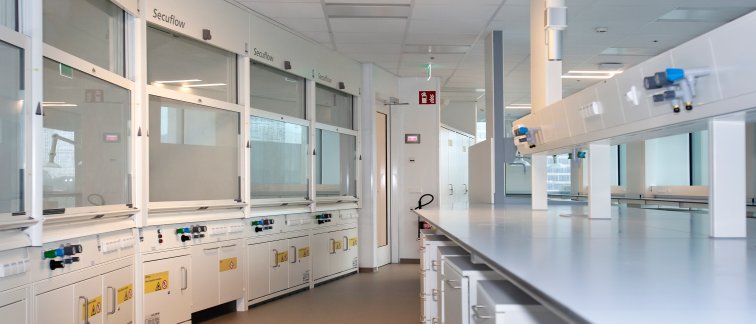Design of tracers
The Tracer Center Amsterdam has an up-to-date and outstanding equipped lab at the 3rd floor of the Amsterdam UMC Imaging Center, facilitated to do computational design of new leads for tracers and synthesize them in organic chemistry labs (14 fume hoods, all kinds of reaction techniques and analysis equipment like NMR, HRMS, LC-MS, HPLC).
Succesfull leads will be radiolabeled with predominantly 11C, 18F or 89Zr in the radiochemistry labs (8 hotcels, 5 fumehoods and equipped with all relevant equipment like synthesis modules, LC-MS, HPLC, phosphor imager, LC-MS) and next evaluated in rodents with the aid of our Mediso nanoPET/CT or nanoPET/MR or the Bruker Xtreme. It is licensed for many animal models including GGO, for oncology, neurology and inflammatory diseases and equipped with all relevant equipment for in vitro experiments like cell culture, binding-assays, autoradiography, immunofluorescence.
GMP
The GMP (good manufacturing practice) production of the tracer will be set-up to translate to research in humans. There are 12 GMP hotcels and a license available to produce tracers according the most recent EU regulations and issued by the national competent authorities. Hotcells are equipped with modern synthesis modules and auxillary equipment.
Moreover, the GMP lab is used for the synthesis if tracers for patient care providing Amsterdam UMC patients as well as patients from other hospitals access to the most modern diagnostics tools and therapies.

